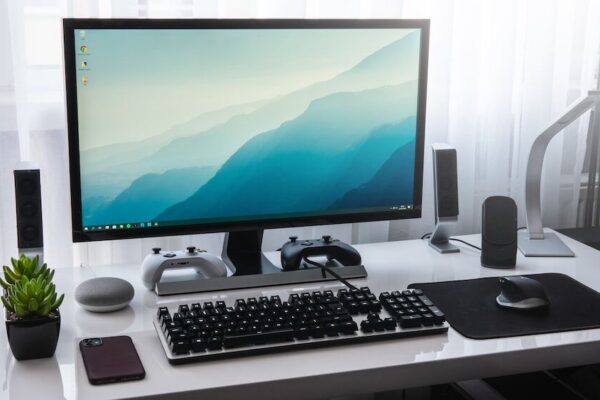Do you guys know that human evolution has shaped our behaviours and how we learn?
Tell us about it, sir.
Google Classroom – Introduction

Well, our interactions with modern learning methods like being seated in this lecture hall, or reading books, watching videos happened faster compared to the period of years it took us to get to this point.
Prof, I read someone that higher education, in a formal and organised setting like this, only took flight in Nigeria exactly 74 years ago.
Correct! On January 18, 1948, the first university in Nigeria, the University College, Ibadan, launched its first courses. You can imagine the number of students yearning for such opportunities and only one school to meet those needs. If it were so now, many of you wouldn’t be here. Close to eight decades now, a lot has changed. We now have 43 federal universities, 48 state universities, and 79 private universities.
Sir, not to forget the different polytechnic and colleges of education dotting each part of the country.
Exactly! However, the biggest change that shaped our behaviours and how we learn came about two to three decades ago. The use of online education has evolved to become a sophisticated, well-accepted and readily available means of delivering quality education. A prominent player in this field of learning is Google Classroom.
What is Google Classroom?
Yes, Google Classroom. It’s a free blended learning platform from Google created for educational institutions that aim to simplify, develop, distribute, and grade assignments. The primary purpose of Google Classroom is to streamline the process of sharing files between teachers and students. By 2021, approximately 150 million users are hooked to Google Classroom. In Nigeria, we are proud that this institution will soon be part of the family.
(Students clapping)
How does this Google Classroom work, sir?
Okay, I’ll explain. Google Classroom integrates a variety of other Google Applications for education, such as Google Docs, Google Sheets, Google Slides, Gmail, and Google Calendar into a cohesive platform to manage student and teacher communication. Students can be invited to join a class through a private “class code” or be imported automatically from a school domain.
So, sir, we don’t have to be seeing your face all the time and yet be a part of the class?
(Smiling) That’s the beauty of Google Classroom because it allows us, teachers, to create, distribute, and mark assignments all within the Google domain. Each class creates a separate folder in the respective user’s Google Drive, where the student can submit work to be graded by a teacher. Assignments and due dates are added to Google Calendar, where each assignment can belong to a category or topic.

Sir, how do you then monitor my progress?
That’s easy. We do that by reviewing the revision history of a document, and after being graded, we can return work along with comments and grades. There was a sharp increase in the use of Google Classroom as a result of the COVID-19 pandemic in which many schools shifted to remote education options. Specific research programmes also used Google Classroom to engage in authentic learning from around the world.
Prof, can you tell us the features and uses of Google Classroom to keep us abreast with it before they are made to use it?
Fine. Google Classroom integrates several Google Applications for Education (GAPPS) such as Google Drive, Google Docs, Google Sheets, Google Slides, Google Forms, Google Sites, Gmail to help educational institutions transition to a virtual, paperless system. Later, Google Calendar was added to help with an assignment due date, field trips, and class speakers. Students can be invited to classrooms through the institution’s database, through a private code that can then be added to the student’s user interface or automatically imported from a school domain. Each class created with Google Classroom creates a separate folder in the respective user’s Google Drive, where the student can submit work to be graded by a teacher.
Prof, I am lost with all this Google jargon! Can’t we just maintain the current teaching methods?
Do you know the danger of doing that?
Tell us, please.
We don’t know when the next pandemic will come and when the current one will end. And nothing should disrupt learning. Most countries abroad used Google Classroom during the Covid-19 pandemic. It pivoted to online learning systems to facilitate learning opportunities. It provided equitable access to students and exposed learners to current and relevant online platforms…
But sir, in Nigeria, don’t you see it will pose challenges such as unreliable internet connections, high costs of technology, and a lack and unavailability of training to use the platform? Adopting a fully remote or online education system brings forward socio-economic challenges such as access to technology in remote and lower socio-economic society areas.
I share your concerns but you have failed to realise that we are not throwing away the baby, which is the method we have now, with the bathwater. It will be a gradual integration. If we don’t adapt, we’ll die! The government should consciously dedicate funds for this project because the requisite infrastructure to quickly switch to online teaching is enormous. Some institutions in the country, like the University of Ibadan we mentioned during the introduction of this lecture, have introduced one form of eLearning or the other but the problem is that most are still unregulated with lecturers left to sort out ways to fix the issues. In studies discussing the use of Google Classroom for English as a foreign language study like in Nigeria, students had positive perceptions towards using the tools. It helped them to learn about grammatical concepts and collaborate with others using student-to-student interactions and collaborative feedback. Recently, the eLearning industry-tested and made a review of Google Classroom where positive and negative aspects were highlighted. The ease of use, universal device accessibility, use of Google Drive as an effective way for teachers to quickly share assignments with students, the paperless process meaning the end of printing, handing out, and potentially losing work, and the fast feedback system between students and teachers were applauded. Among Google Classroom’s disadvantages, the review highlighted the service’s heavy integration of Google apps and services with limited or no support for external files or services, lack of automated quizzes and tests, and a lack of live chats that can aid in feedback efforts. But I am sure in future, these shortcomings will be addressed. Even at that, Google Classroom won a 2020 Webby Special Achievement Award.
Well, prof, with the prominence of Google, we students may find Google Classroom easy to navigate since many of us are familiar with Google layout.
Now you are talking! Furthermore, the mobile app for Google Classroom functions well which has been praised by your contemporaries abroad. If notifications are enabled, the mobile app for Google Classroom can provide push notifications to remind you of upcoming deadlines, a feature that has been received well by students. Additional research has shown the benefits of using Google Classroom in a blended learning model such as developing self-efficacy skills and attaining learning outcomes.
How can one create a class in Google Classroom?
Well, our next class covers this. But since you have asked, let me run through it as briefly as possible. Go to classroom.google.com. On the Classes page, click Add Create class. Enter the class name. To enter a short description, grade level, or class time, click Section and enter the details. This is optional. It is also optional to add a subject, click Subject and enter a name, or click one from the list that appears when you enter text. To enter the location for the class, click Room and enter the details; optional, too. Click Create. When you create a class, Classroom automatically creates a class code. You use it to invite students to the class. You can always view the class code on the Stream page. We are running out of time. Before we call it a day, let me quickly talk about Originality Report, Archive Courses, and Mobile Applications…
Originality Report? That sounds like a movie…
Well, you can say that again! Introduced in January 2020, the originality report allows teachers and students to see the parts and sections of a submitted work that contains the exact or similar wording to that of another source.
More like a plagiarism check?
Exactly! The originality report helps students to highlight source materials and flag missing citations to assist them in improving their writing. We teachers can view the originality report, allowing us to verify the academic integrity of the submitted work of the students. On G Suite for Education, (it’s free by the way), teachers can turn on originality reports for about three assignments. It has limited cloud storage because it is free. If you pay, this restriction is lifted on G Suite Enterprise for Education. As we round off, let’s talk about Archive Courses. Google Classroom allows instructors to archive courses at the end of a term or year. When a course is archived, it is removed from the homepage and placed in the Archived Classes area to help teachers keep their current classes organised. Teachers and students can view such archived courses only that they won’t be able to make any changes to them until they are restored.
How to download, set up and log in to Google Classroom

The last part is the Mobile Application. Introduced in January 2015, Google Classroom mobile apps are available for iOS and Android devices. You can download it on Google PlayStore. Instructions on how to sign in or login will be displayed once you set up the app. The application lets users take photos and attach them to their assignments, share files from other apps, and support offline access, easing accessibility for users like you. And that’s the end of the class. How did you find the lecture?
Technical!
Good. Welcome to the fast-changing world of online learning!
Key dates in the history of Google Classroom
Since it was released in May 2014, Google Classroom has evolved. Here are the key dates.
- May 6, 2014: Google Classroom was announced with a preview available for some members of Google’s G Suite for Education programme.
- August 12, 2014: Google Classroom was released publicly.
- 2015: Google announced a Classroom API and a share button for websites, allowing school administrators and developers to further engage with Google Classroom. Google integrated Google Calendar into Classroom for assignment due dates, field trips, and class speakers.
- 2017: Google opened Classroom to allow any personal Google users to join classes without the requirement of having a G Suite for Education account, and in April of the same year, it became possible for any personal Google user to create and teach a class.
- 2018: Google introduced a major redesign to Classroom. This included adding a new classwork section, improving the grading interface, allowing reuse of classwork from other classes, and adding features for teachers to organise content by topic.
- 2019: Google introduced 78 new illustrated themes and the option to drag and drop topics and assignments in the classwork section.
- 2020: Google added integration with Google Meet so that teachers can have a unique meet link within each class. In addition, several features were added to the classroom, with Google stating “as educators worldwide have reinvented their practice online, we’re also adapting our tools to meet the evolving needs of their new educational landscape”. The updates are a new to-do widget; 10 additional languages; better integration with learning management systems to create and distribute assignments, and an added smart correct and auto-compose to Google Docs.








